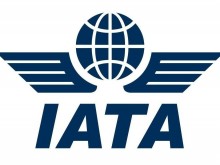 The domestic India market topped the growth chart for the second year in a row according to IATA’s full-year global passenger traffic results for 2016. Passenger volumes surged by 23.3 per cent in 2016 – twice as fast as the next fastest growing market, China. Although the trend slowed down due to demonetisation, airlines are scheduling strong flight frequency growth in 2017, which will translate into time savings for passengers and will have the same stimulatory impact on demand as a cut in fares. India recorded revenue passenger kilometre (RPK) expansion of 23.3 per cent and has been underpinned by additional routes and increasing flight frequencies. “Air travel was a good news story in 2016. Connectivity increased with the establishment of more than 700 new routes. And a $44 fall in average return fares helped to make air travel even more accessible. As a result, a record 3.7 billion passengers flew safely to their destination. Demand for air travel is still expanding. The challenge for governments is to work with the industry to meet that demand with infrastructure that can accommodate the growth, regulation that facilitates growth and taxes that don’t choke growth. If we can achieve that, there is plenty of potential for a safe, secure and sustainable aviation industry to create more jobs and increase prosperity,” said Alexandre de Juniac, IATA’s Director General and CEO.
The domestic India market topped the growth chart for the second year in a row according to IATA’s full-year global passenger traffic results for 2016. Passenger volumes surged by 23.3 per cent in 2016 – twice as fast as the next fastest growing market, China. Although the trend slowed down due to demonetisation, airlines are scheduling strong flight frequency growth in 2017, which will translate into time savings for passengers and will have the same stimulatory impact on demand as a cut in fares. India recorded revenue passenger kilometre (RPK) expansion of 23.3 per cent and has been underpinned by additional routes and increasing flight frequencies. “Air travel was a good news story in 2016. Connectivity increased with the establishment of more than 700 new routes. And a $44 fall in average return fares helped to make air travel even more accessible. As a result, a record 3.7 billion passengers flew safely to their destination. Demand for air travel is still expanding. The challenge for governments is to work with the industry to meet that demand with infrastructure that can accommodate the growth, regulation that facilitates growth and taxes that don’t choke growth. If we can achieve that, there is plenty of potential for a safe, secure and sustainable aviation industry to create more jobs and increase prosperity,” said Alexandre de Juniac, IATA’s Director General and CEO.
Asia Pacific carriers recorded a demand increase of 8.3 per cent in 2016 compared to 2015, which was the second-fastest increase among the regions. This pace is considerably ahead of the five-year growth average of 6.9 per cent. Capacity rose 7.7 per cent, pushing up the load factor 0.4 percentage points to 78.6 per cent.
Breaking News
- Tour Blue Holdings Awarded GOOD TRAVEL SEAL, Joins Travelife, and Expands to Northern Sri Lanka with New Jaffna Office
- Anantara Jewel Bagh Jaipur hosts excusive evening in Delhi, plans to expand focus to FIT, MICE & corporate
- Thailand sees 30% increase in flights from India compared to last year
- BaliTrip Wisata to add Sri Lanka and the Philippines to its portfolio from October
- Himachal plans new tourism council to fast-track big projects, attract investment
- India, Japan drive APAC resilience despite global slowdown: GlobalData
- T Syndicate hosts independence-themed travel industry meet in Mumbai
- Malaysia Airlines to Malaysia launch daily flights to Trivandrum by Dec
- Tripura to set up 6 eco-parks, looking to boost tourism in state
- ITC expands North India presence, signs Fortune Hotel, Lucknow
- Kerala to launch first-ever low-interest loan soon to empower women in tourism
 Tourism Breaking News
Tourism Breaking News


